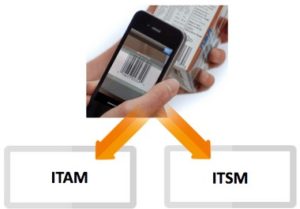To be really good at hardware asset management, you need your field services people to participate. They’re the ones in the field deploying, fixing, moving and reclaiming assets on a regular basis. Without their help updating the asset repository as things move around, it’s extremely difficult to maintain accurate inventory without doing expensive physical inventories.
Service and Asset Management are Different
The challenge is, field services is measured on Service Level Agreement (SLA) compliance, not asset data accuracy. If they miss their incident SLA windows, alarms go off and things escalate. KPI reports show SLA compliance and there can be severe penalties for poor SLA performance. Field services lives and dies by the almighty SLA.
IT asset tracking is not typically a concern of field services because they don’t directly benefit (or suffer) based on the quality of asset data. Asking field services to do asset tracking tasks is more work to do, which slows them down and impacts SLA compliance. So, not only does asset tracking not matter much to field services, but it can also negatively impact what they do care about.
Make Asset Tracking Easy
The first thing to do is to make asset tracking as easy as possible on your field techs. Do this by leveraging mobile technology your techs are familiar with, through asset tracking smartphone apps that support barcode scanning and integrate directly with your selected IT Asset Management (ITAM) database. Make asset tracking as simple as scanning a barcode and an end user’s badge to eliminate as much friction as possible from your field tech’s workday.
Mobilize and Link ITSM and IMAC Process
However, just because you gave your field techs asset tracking software that supports barcode scanning, it’s still extra work they have to do. Even those few seconds they spend scanning a barcode eats into time they could be spent doing real work. So, making it easy is only the first step.
You can get field services enrolled by providing access to their IT Service Management (ITSM) incident and work order queues from their mobile devices. By accessing tickets remotely, they eliminate the need to travel to their desks. This lets them close more tickets in a day and achieve more SLA compliance.
Require Asset Updates for Ticket Closure
Within your mobile incident management solution, insert the requirement to scan an asset using the mobile app before the field services technician can close their ticket. Even if they don’t swap an asset, they must at least scan the asset they worked on, verify the accuracy of information, before the save and upload their ticket closure.
By giving them a solution that mobilizes ITSM, they will adopt the tool. By requiring them to scan and update an asset record for every hardware asset related ticket they’re assigned, they will adopt the asset management process.
Create Competition
Lastly, incorporate asset transactions into your field services KPI reporting, and rank your service areas by asset tracking process compliance. Calculate the percentage of tickets closed to asset updates reported to the ITAM repository and publish the results somewhere visible throughout the organization. Those who comply best with the asset tracking process rise to the top. Those who resist will fall to the bottom.
By ranking service areas publicly, you will create competition to reward those who perform well and expose those who aren’t adopting the process. This can help motivate those who aren’t performing well, as no one likes to be at the bottom of a ranked list.

Tom Watson is AMI’s President and CEO. He began his career in high tech in 1996, as a software engineer for his own software company, Market Matrix. After joining IT Asset Management firm Micropath as senior architect for that company’s asset tracking system, he founded AMI to develop hardware asset tracking technology solutions for enterprise IT Asset Management customers to maintain complete, current and accurate data on their own.



